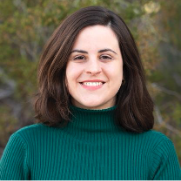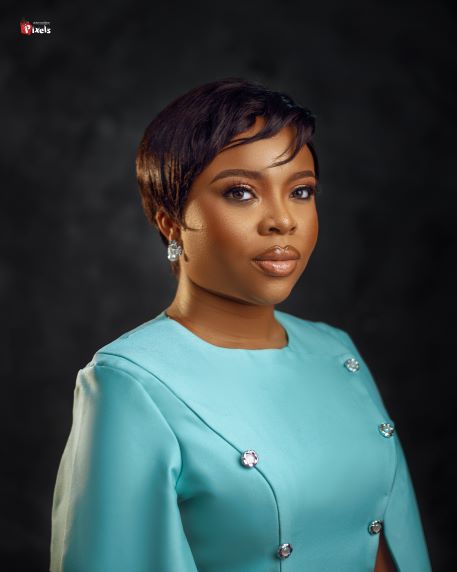This is the fourth post of our Let’s Talk Academia, Industry, and Career Transitions. In this special edition of the DRC Talk Series, we chat with professionals in Rhetoric and Composition or Technical and Professional Communication who have successfully transitioned beyond academia. Our goal is to learn from their experiences and gather practical advice and resources for graduate students and early career scholars exploring similar paths.
Earlier this semester, Toluwani and I had the chance to sit down virtually with Dr. Erica Stone. We expected to hear about teaching and industry. What we didn’t expect was so many insights on how to live an intentional life and embrace the transitions that come with it. This post is our attempt to summarize the many valuable resources and highlights of Erica’s life story and experiences.
Erica joined us from her home office, where she works full-time as a Senior Content Strategist at Pearson, a global education company. Her role centers on eCommerce content strategy, UX writing, and collaborating with distributed teams across multiple time zones. Before that, she was a content designer at Wells Fargo, tenure-track professor, a consultant, department chair, grant writer, TEDx speaker, fiction writer, and, yes, a ranch hand!
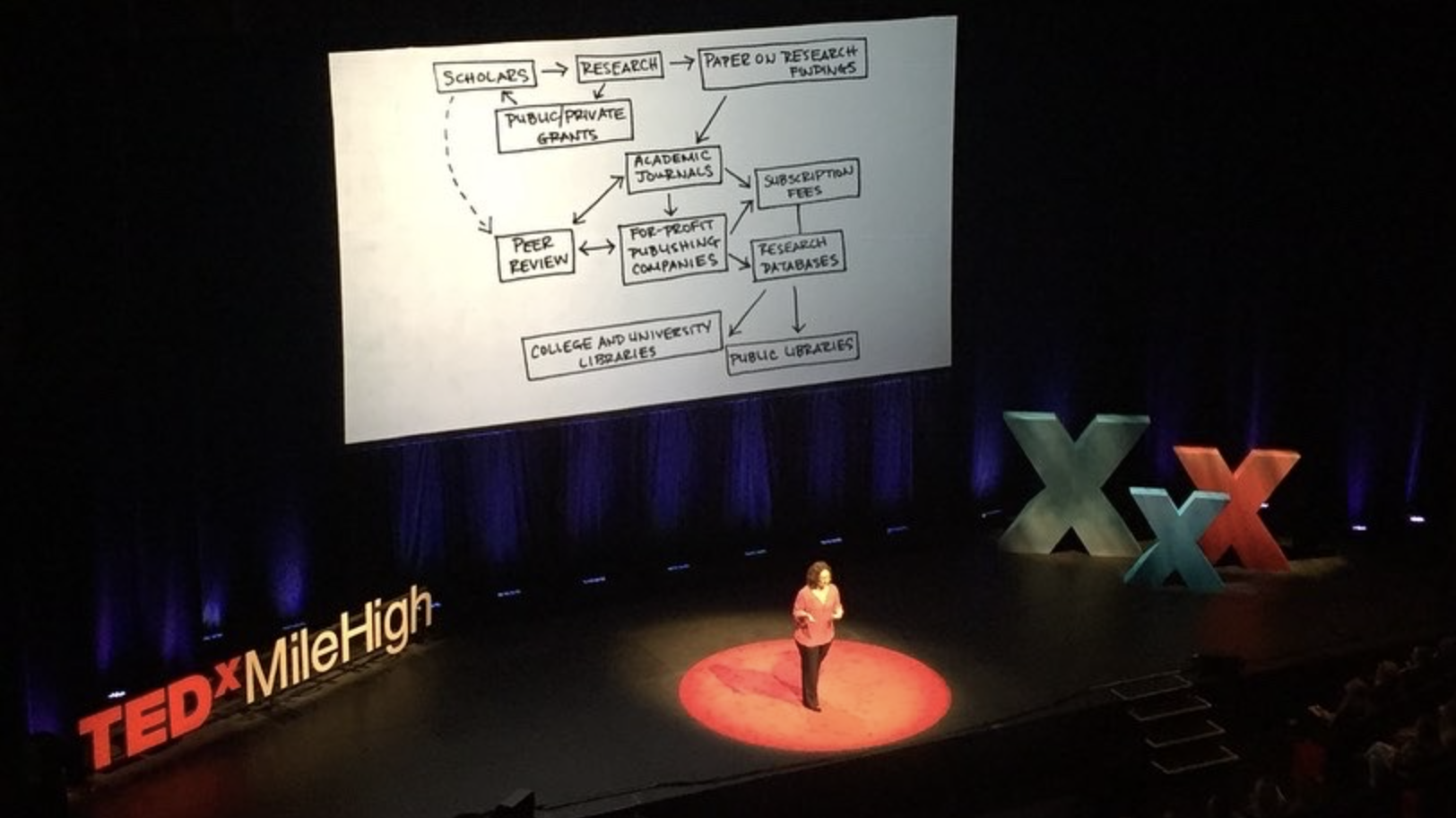
If that sounds like a winding path, it’s because it is. But as Erica shared with us, it’s also one she’s took deliberately, guided by three life rules she’s cultivated over 15 years of professional pivots:
1. Turn down offers, not opportunities: “You won’t know what the universe has to offer you if you’re not open to listening. Credit to Bill Hart-Davidson.”
2. Embody a growth mindset. Reinvention is a catalyst for growth, innovation, and adaptation. Challenge yourself to grow, changing your beliefs and behaviors based on lived experiences. It might just change your life or the lives of others.
3. Never stop learning. When we yield to the power of learning, we become new (sometimes better) versions of ourselves.
These motos, which aren’t just abstract slogans for Erica, shape how she chooses jobs, collaborates across disciplines, and teaches others to translate their skills beyond academia.
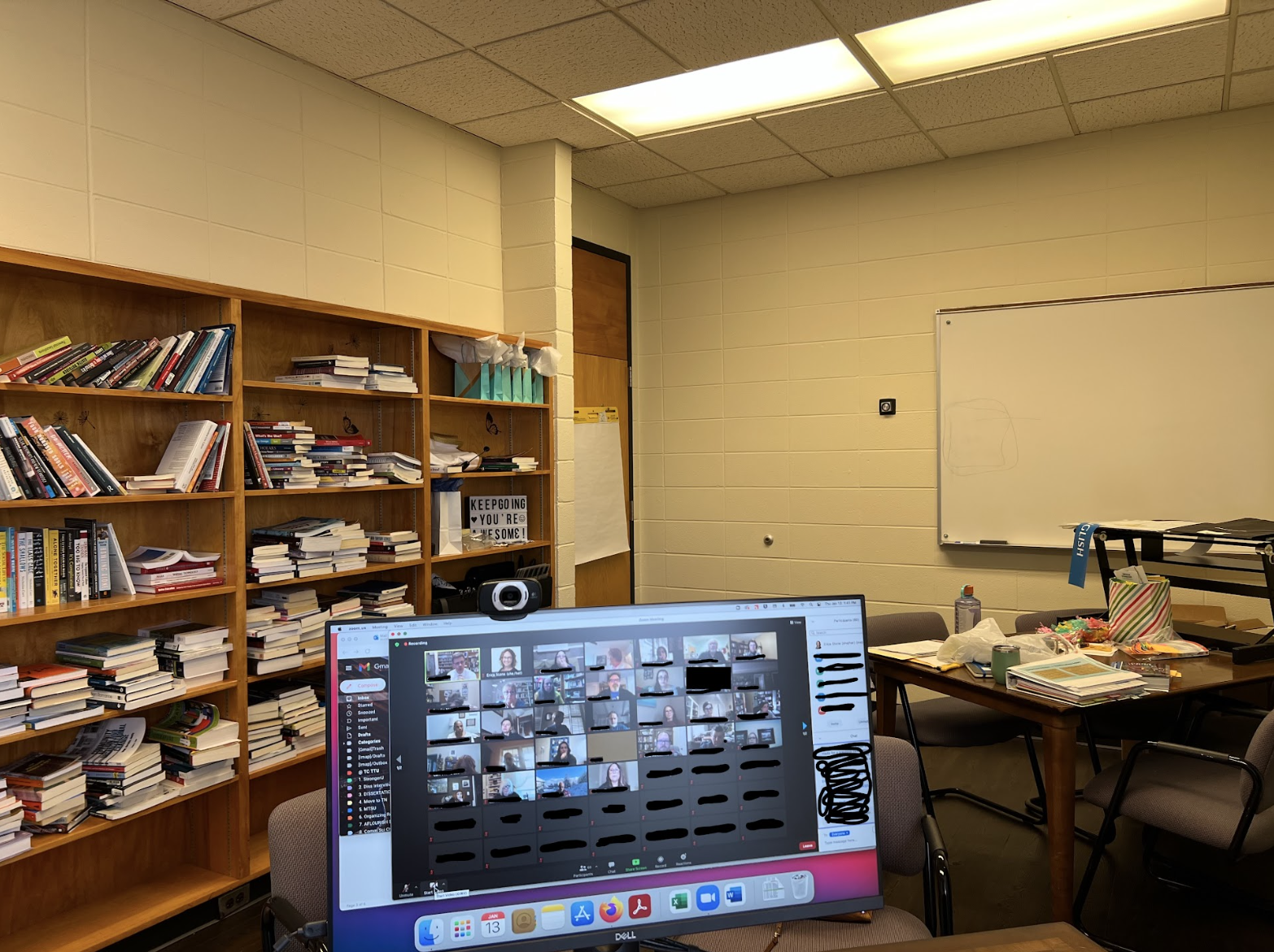
From Sculpture to Strategy
We asked Erica to walk us through her career journey, how she went from earning a BFA in sculpture to leading enterprise content strategy teams. “My journey has been a long one,” she said, smiling. “I’ve had nine career transitions. What I’m doing now didn’t even exist when I started.”
Erica’s story is through art education, K-12 classrooms, community college English departments, tenure-track jobs, and consulting roles. She completed her PhD at Texas Tech while teaching and consulting, which led to her working multiple jobs, teaching at several institutions, and co-designing the public writing program at MTSU.
Then in 2022, she transitioned fully into industry. First at Wells Fargo, where she wrote UX copy for digital wallets like ApplePay and Paze, and now at Pearson, where she leads eCommerce and marketing content strategy for websites in the United States, United Kingdom, and Canada. “I didn’t know if leaving academia would be permanent,” she told us. “I just knew it was the right choice for that moment.”
Erica continued to emphasize the importance of choice, timing, and circumstances. In 2022, she had a tenure-track job with wonderful colleagues and students. But she desperately wanted to be home in Birmingham, AL, and a remote industry job allowed her to relocate more easily.
She was also careful to say, “I’m not one of those people who’s constantly encouraging graduate students or faculty to leave the academy. We need good teachers, strategic thinkers, and thoughtful researchers. It just wasn’t the right long-term path for me.”
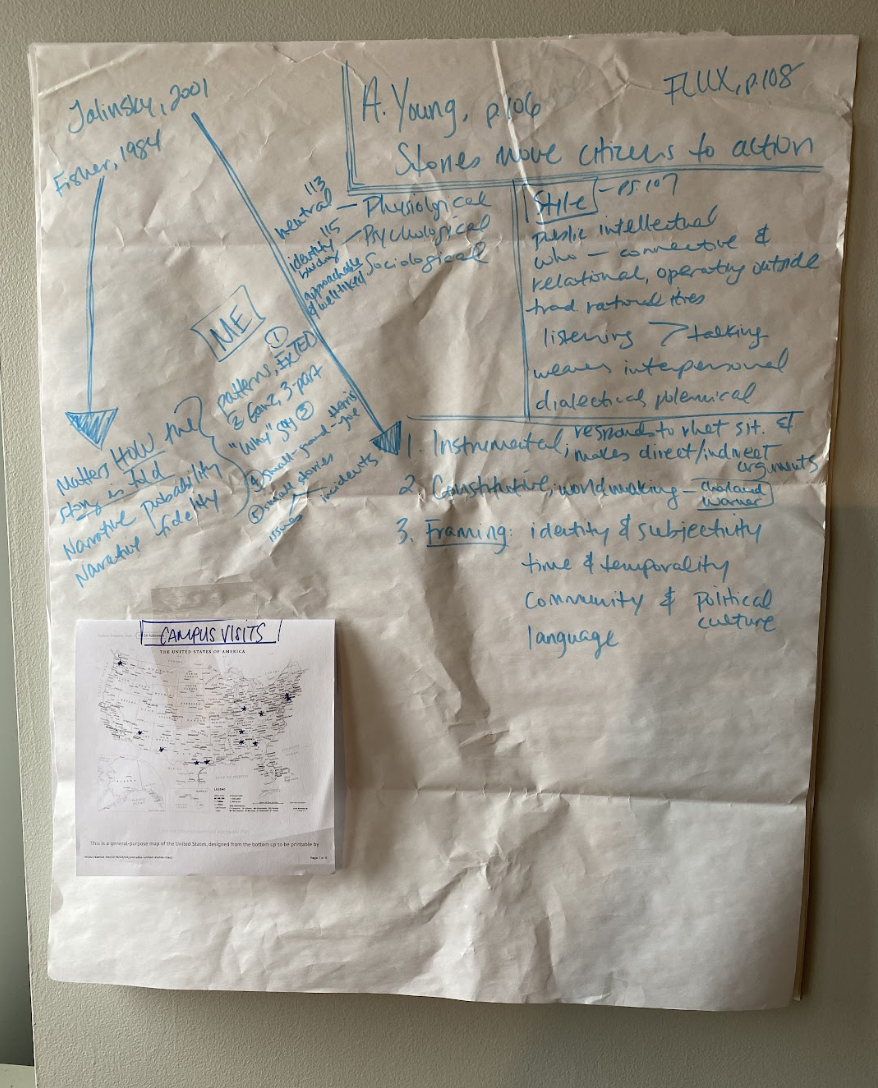
Designing Your Life
At multiple points in the conversation, Erica returned to a phrase that was especially impactful to us: “Design your life.” It’s both a call to agency and a reminder to start with your day-to-day and how you want it to look: “Academia trains us to think about prestige and outcomes,” she said. “But I always ask: What do you want your life to feel like on a Tuesday afternoon?”
She encourages students and faculty alike to map out their ideal days, then reverse-engineer their careers to match that rhythm. “Academia gives you autonomy, but industry can offer clarity,” she explained. “Projects move faster. Teams are cross-functional. And your expertise is measured not just by your ideas, but by your deliverables. You have to explore if that is for you.”
At the end of the day, Erica is a writer and designer at heart. Her background in sculpture still shows up in her daily work and decision-making practices. The idea of designing your life sounds cliche, but it’s really just about considering how you want to spend your time and what spaces you want to be in (or not in).
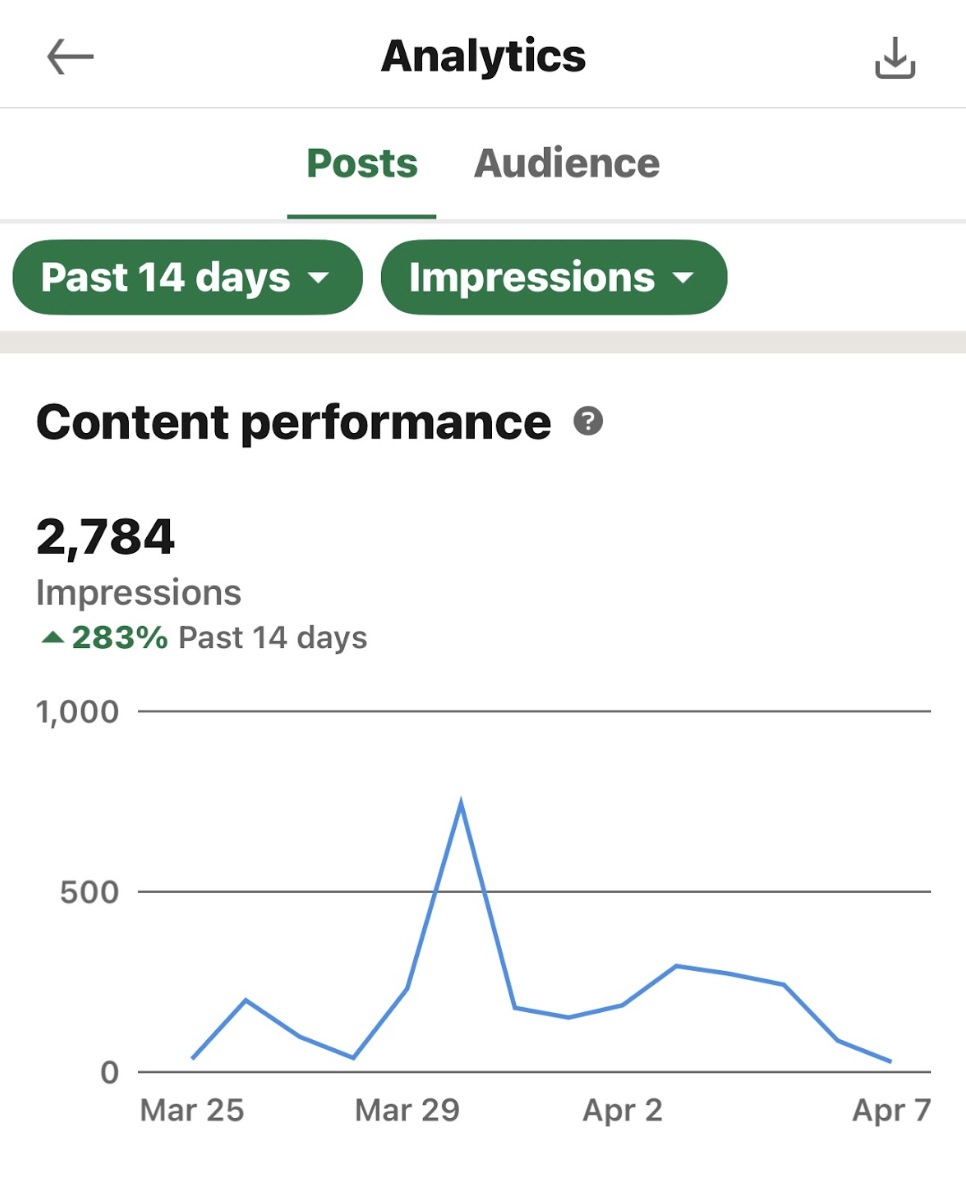
A Day in the Life of a Content Strategist
So, what does Erica’s day actually look like? A typical one involves:
- 5-7 Microsoft Teams meetings with 5-20 participants, covering project updates, stakeholder reviews, sprint planning, and long-term deliverables.
- Collaborating in Figma with 2-3 UX designers to draft, review, and refine interface content–such as buttons, tooltips, form labels, payment details, and consent language.
- Creating detailed copy decks, or other structured documents, used by developers and content authors to implement web pages, features, or app flows accurately, including anchor links and legal references.
- 1:1 check-ins with content contractors to answer questions and provide feedback.
- Touchpoints with product designers and managers to confirm project scope, align on messaging strategy, and ensure content meets user expectations and business needs.
- Cross-team meetings with global marketing teams in the U.S., U.K., and Canada to align messaging across customer touchpoints.
- Periodic legal reviews to ensure compliance with data privacy laws like GDPR and to confirm that all content meets regulatory standards.
- Weekly UX team stand-ups focused on project timelines, capacity planning, and continuous improvement of content workflows.
“As the only full-time content strategist on my team, I do a little bit of everything,” she said. “I write the words, but I also lead the content process, manage deliverables, and make sure we’re hitting the mark for global audiences.”
That global piece is key. Erica works on teams that localize content for multiple countries. Recently, she led the launch of new Pearson+ eCommerce pages in the U.K. and Canada. When describing that to us, she mentioned that it was an effort that required deep rhetorical awareness, which she learned from her PhD and years of teaching experience.
“We had to understand how students in those regions study, what terms they use, what they value,” she said. “It was digital rhetoric in action.”
From Rhetorical Theory to UX Practice
When we asked how her academic training shows up in her industry work, Erica didn’t hesitate: “I use rhetorical frameworks every day. Especially audience analysis, genre awareness, and the idea of ethos.”
She also draws on her background in public writing. Her dissertation focused on civic tech platforms and storytelling frameworks, such as Marshall Ganz’s “Story of Self, Us, and Now.” One of the most resonant moments in our Zoom chat was when Erica talked about the visualization of research for her own learning process and dissertation work, and how that translates into her role quite often. “People don’t want 20-page PDFs anymore. They want infographics, dashboards, visuals that make research usable,” she told us. “It’s about turning insights into action.”
She encouraged scholars and students to not just share research but to design it for utility: a mindset that aligns with UX, civic engagement, and public communication. If you’re mentoring students, developing a course, or even rethinking how to present your own work, this insight offers a helpful pivot: Think about how your research looks, feels, and functions for your audience.
At Pearson, those frameworks show up in landing pages, support FAQs, and even transactional emails. Erica explained: “We’re telling stories about why learning matters, why trust matters, and how users can find what they need without friction.” Her understanding of discourse communities and content ecosystems helps her communicate across teams between designers, marketers, legal teams, and engineers. “Industry work is deeply collaborative,” she highlighted; “Your success depends on how well you can translate between groups.”

Teaching, Translating, and Trusting the Process
Although she’s no longer in a university classroom, Erica is still a teacher at heart. She mentors junior writers, leads training sessions, and offers professional development workshops for students and early-career scholars making the leap to industry. She talks to undergraduate classes and graduate programs usually once or twice a year, and we were lucky to get her insights for the DRC community.
In fact, it was her work with graduate students at MTSU, helping them imagine futures beyond the professoriate, that nudged her toward content strategy. “I saw students frustrated by courses that only focused on traditional academic outputs,” she told us. “We needed to be preparing them to write for public audiences, such as government, nonprofits, private sector, and tech. That impulse led to the creation of MTSU’s Public Writing and Rhetoric concentration and a personal mission to demystify industry paths.
Advice for the Field
As we wrapped our conversation, we asked Erica what advice she would offer to students and educators alike.
For students:
- Start thinking about what you want your life to look like. Think about what you want your daily life to feel like. What kind of schedule, environment, and balance do you want? Erica found this book on how to design your life to be a helpful tool for thinking about values, day-to-day activities, work/life balance, etc.
- Study job ads like texts. Don’t just read them and apply, but to learn the language of the industry. Do a few informational interviews with people in both academia and industry. Each institution and company is different, so talk to a range of professionals to get the full picture. You might find Erica’s co-authored white paper on maximizing career potential to be helpful.
- Experiment with tools. Figma, Jira, Confluence, Miro. Don’t wait until you’re hired.
- Volunteer or freelance. Apply what you’re learning in class to real-world projects, whether it’s for a nonprofit, a campus org, or a personal side project. This kind of work makes great portfolio content, even if it wasn’t paid or part of an internship.
- Build effective application materials. As linked in the resources section of this post, it is important to translate your academic experience into industry language and documents.
- Talk to people. Careers are built through relationships, not just résumés.
- Create a simple, effective portfolio that explains your process and problem-solving. “A portfolio doesn’t have to be fancy,” Erica told us. “It has to show your process, your thinking, and your potential. A simple slide deck works just fine.”
For educators:
“Give students real audiences,” she said. “Work with nonprofits. Design internships that actually teach. Stop making students write only for you.” Erica recently provided feedback for Dr. Emma Rose’s students at the University of Washington. Dr. Rose’s students worked with real clients within their communities to solve design problems. Read more about Dr. Rose’s students’ work on LinkedIn.
Try out some consulting work for yourself. Erica said, “Far too many academics go straight through their education and into a tenure-track role. If we want to teach students how to be good thinkers AND good do-ers, it’s important for faculty to understand what roles look like outside of the classroom.”
On Letting Go, and Holding On
Finally, we asked: What has she gained (and lost) since leaving academia?
Erica was honest. She misses the freedom to make her own schedule, the opportunity to mentor students regularly, and the constant collaboration with smart colleagues. But she doesn’t miss the emotional burnout, the administrative roadblocks, or the limitations of the academic job market.
“I still write for academic audiences,” she said. “I just finished a co-edited collection, with a companion blog, that will soon be published with the WAC Clearinghouse. I also designed a course called Usability Strategies for Technical Communication” for Rochester Institute of Technology’s RIT Certified program. Leaving academia didn’t mean that I stopped being a researcher or a writer.”
And she writes for public audiences, too. Erica often reviews content strategy books or writes thought leadership about writing with and for public audiences on her Medium blog. Most recently, she put out an RFP for an edited story collection from the perspective of oldest daughters.
She also writes for fun! For example, every October, she writes one haiku a day. You can read her poems from 2023 on her Medium blog.
What she’s built instead is a career (and a life!) designed with intention. “People think leaving academia means you’ve failed,” she said. “But it can also mean you’ve chosen a different, intentional path yourself.”
Want to Learn More? Here are Erica’s shared resources:
Translation & Career-Shift How-Tos
- The Bold PhD’s Career Tools – Professional tools to help you transition from academia to industry, including an app to help you translate your skills from CV language to resume bullet points.
- Follow Dr. Gabrielle Filip-Crawford’s Next Draft LLC on LinkedIn for job searching tips and tricks or sign up for the newsletter.
- Fundamental Differences Between Academic & Industry Jobs – Concise explainer of key contrasts between types of jobs.
- Pearson’s recent white paper: “Lost in Transition” – Data-rich report on systemic barriers at major career pivot points.
- Writing for/with Publics – Erica’s workshop slides from a recent class visit. They offer examples of public writing, from nonprofit grant memos to corporate UX microcopies.
Résumé, Portfolio & LinkedIn Guides
- LinkedIn Workshop Series – A 3-part workshop for students, specifically writing majors, who are new to LinkedIn and trying to understand how to navigate the platform.
- Monster.com Résumé Database – Browse hundreds of industry-specific samples to harvest action verbs and formatting cues.
Community, Podcasts & Continuing Inspiration
- The Bold PhD – Blogs, YouTube channel, and podcast by Dr. Gertrude Nonterah on branding your research identity for non-academic careers. Or, sign up for the newsletter.
- Content Strategy Podcast – Kristina Halvorson interviews leaders at the intersection of UX, content design, and rhetoric; great for classroom listening lists.
- Button Conference (Brain Traffic) – Annual content-design event (virtual + in-person); sessions on storytelling, accessibility, and AI writing workflows.
- The Jawbreaker Blog (Amy Santee) – Candid newsletter dissecting the current UX job market and hiring trends. Or subscribe to Amy’s newsletter.
- Code for America – Archived Civic-Tech Projects – Browse sun-setted brigade repos for open documentation tasks or case-study fodder. Erica wove her work with this organization into her classes, and wrote a DRC blog post about it in 2019.
Books, Blogs & Bigger Picture Reads
- Beyond Academia (Matteo Tardelli, PhD) – Story-driven guide packed with worksheets for planning an industry leap, with free associated resources.
- Medium Collections: “Leaving Education” and “Staying in Education” – First-person reflections on exiting higher ed; search tag surfaces hundreds of transition narratives. There are also counter-perspective essays on reform from within academia.
- The Conversation – Education Section – Commentary by scholars translating research for public audiences; examples of accessible academic writing.

